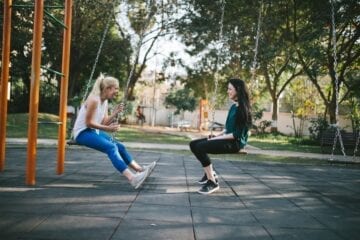Understanding Different Types of Responses from Children and Youth who are Survivors of Sexual Abuse
Why is it important to understand the impact of sexual abuse on children and youth?
The World Health Organization (WHO) defines childhood sexual abuse as the involvement of a child in sexual activity that he or she does not fully understand.” (WHO, 1999). Childhood sexual abuse may also include indirect harm to a child who either witnessed sexual abuse, or was subjected to comments or gestures with sexual connotations.
In any case, childhood sexual abuse impacts brain development. (Anderson, Tomada, Vincow, Valente, Polcari, & Teicher, 2008). But what does that mean?
A child may have different responses to sexual abuse, based on:
- Genetic makeup
- Family environment
- School environment
- Social relationships
What does the response to childhood sexual childhood abuse have to do with genes? Let’s take a look.
Genes
Genetic factors influence the way that childhood sexual abuse may impact a child. The child survivor of sexual abuse may have different levels of stress, anxiety or depression based on genetic components. This is why the response will be different for each child. Some children, who are verbal processors, will speak about the sexual abuse while other children may be so traumatized by the event(s) that they suppress the memories. Other children may not suppress the memories, but they respond with silence because they do not feel safe to talk about the matter.
Family Environment
Family environments greatly affect survivors of childhood sexual abuse. Some children and youth live in a home where one or both of their parents were the abuser. In addition, children who are abused may not only live with a parent who not only abused them sexually, but may also have been emotionally, physically, spiritually abusive. This can be quite a challenge for the immaturity of childhood.
Some families do not provide supportive language or safety for students to feel like they can share this information. Some families operate in shame and guilt and may tell the child or youth it was their fault. The quality of the parent’s response will either build resiliency or cause more harm than good.
The more fortunate survivors of childhood sexual abuse may live in a safe, supportive environment where the parent will listen to them and believe them. Depending on the relationship, the parent will also take steps to get additional support for their child and family through counseling and mandated reporting measures.
School Environment
The school environment can either be a safe place or another place of uncertainty for children and youth who have been abused. For some, school is a safe place. These students may have positive, healthy connections with teachers and their classmates. They may feel comfortable sharing what happened with trusted friends who will listen to them, depending on their age and grade level.
The first step for a child in being able to tell about an abusive event is for them to have a sense of safety. But some children may not feel safe either at home or school; they are afraid to share anything with anyone. Children who live in an unhealthy or volatile family environment may have already experienced sexual trauma and will have a hard time confiding in their peers (Blanchard-Dallaire & Hebert, 2014; Hebert, Langevin, & Oussaid, 2018).
Social Relationships
Children in middle school who have positive friendships report that friendships are more helpful than parental support in dealing with abuse in many cases (Kim, Hebert, & Cosette, 2010) compared to young children needing both models. Children who have healthy support systems in both home and school are also likely to develop healthy relationships with peers and neighbors outside of those environments. They tend to feel more comfortable sharing what happened to them. In contrast, children and youth without safe people in their lives and school environments may shut down emotions or be more likely to exhibit behaviors that may look like anger or a belligerent attitude that disconnects them from others just when they are in great need of support.
What Changes Can Help All Children and Youth Sexual Abuse Survivors?
Parents and teachers in the school systems should be aware of and look for signs of sexual abuse, both verbal and non-verbal. Schools can initiate programs that empower students to build friendships both in and outside of the classroom. One mentor for every student can make a positive difference with lasting effects in a child’s life. But families, and communities can also become educated to recognize signs of childhood sexual abuse and learn ways to build students’ confidence. Community education that supports parent awareness, and discuss hard topics such as childhood sexual abuse will help families connect with other families when coping, grieving, or learning how to support and encourage their children after abuse. As more communities, schools, and families become courageous to discuss symptoms and prevention of sexual abuse, there is hope of reducing future cases of childhood.
References
Anderson, S. L., Tomada, A., Vincow, E. S., Elizabeth, V., Polcari, A., & Teicher, M. H. (2008). Effects of CSA on regional brain development, Journal of Neuropsychiatry Clinical. Neuroscience, (20), 292-301.
Blanchard-Dallaire, C., & Hebert, M. (2014). Social Relationships in sexually abused children: Self-reports and teachers’ evaluation.
Hebert, M., Langevin, R., & Oussaid, E. (2018) Cumulative childhood trauma, emotional regulation, dissociation, and behavior problems in school-aged sexual abuse victims. Journal of Affective Disorders, 225, 306-312.
Kim, J., & Cichetti, D. (2010). Longitudinal pathways linking child maltreatment, emotional regulation, peer relations, and psychopathology. Journal of Child Psychology, 51 (6), 706-716. http://dx.doi.org/10.1111/j.1469-7610.2009.02202.x
World Health Organization (1999). Report of the consultation on child abuse prevention 29-31. March 1999 WHO, Geneva, Website accessed at? http://apps.who/int/factsheets/en/childabusefacts.pd?ua=1 on 15th March 2020.


